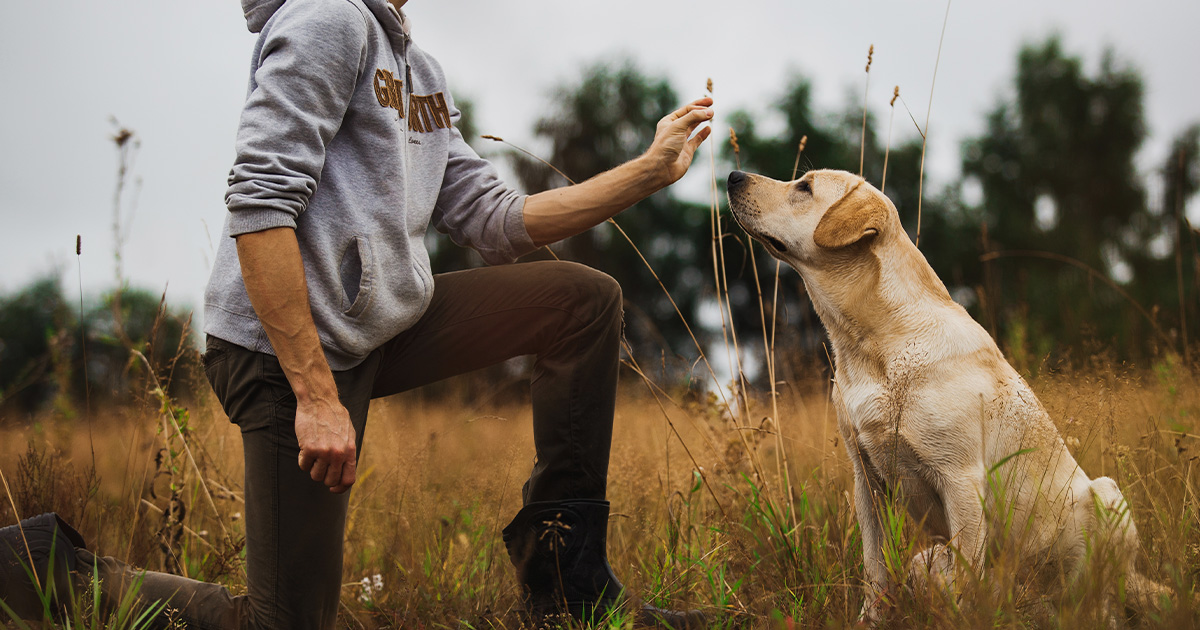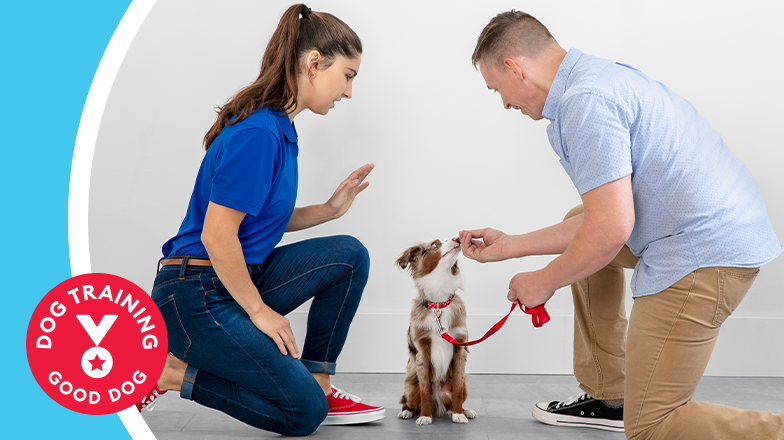Top Strategies for Effective Dog Training Techniques Every Pet Owner Should Know
Top Strategies for Effective Dog Training Techniques Every Pet Owner Should Know
Blog Article
Leading Dog Educating Techniques Every Owner Must Know

Favorable Reinforcement Strategies
Using positive reinforcement techniques is important for efficient dog training, as it fosters a trusting bond in between the pet dog and the fitness instructor. This technique focuses on rewarding preferable actions as opposed to penalizing unfavorable ones, developing a setting for learning. Benefits can include deals with, praise, or play, which inspire pets to duplicate the behaviors that earn them these benefits.

In addition, this technique boosts the canine's enthusiasm for training sessions. When pet dogs connect training with favorable experiences, they are more involved and responsive. Beyond instant therapy, positive reinforcement motivates a collaborative relationship between the pet dog and instructor, reducing anxiousness and worry
To optimize performance, it is vital to supply benefits promptly, making certain the canine links the habits with the support. Essentially, positive reinforcement methods not just generate better-trained pets but also advertise an unified partnership between pet and owner.
Clicker Training Technique
The clicker training approach is a very efficient technique that builds upon the principles of positive reinforcement by adding a distinct audio to mark wanted habits. This method utilizes a small handheld gadget that generates a clicking sound, allowing trainers to communicate with their canines in a immediate and clear manner. When a pet dog does an actions that the proprietor wants to motivate, the clicker is turned on, followed by a benefit, generally in the form of deals with or appreciation.
The trick to effective clicker training lies in uniformity and timing. It is crucial to click at the exact moment the desired behavior occurs, guaranteeing that the pet links the noise with the action and the succeeding incentive. This approach not just enhances interaction however additionally cultivates a more powerful bond between the owner and the pet dog, as it motivates involvement and communication throughout training sessions.
Clicker training can be used to a range of behaviors and commands, from standard obedience to much more intricate techniques. Its flexibility and effectiveness make it a favored strategy among specialist trainers and pet dog owners alike, leading the way for a receptive and well-trained canine friend.
Leash Training Fundamentals
Efficient chain training is necessary for ensuring a safe and pleasurable strolling experience for both pet dogs and their owners. Dog training. Leash training ought to begin very early and be approached with patience and uniformity. Begin by picking an appropriate chain and collar or harness. A flat collar may function for some dogs, while others might profit from a harness that decreases drawing.
Present your canine to the leash progressively, allowing them to discover it in a comfy atmosphere. This entails satisfying your pet for walking beside you rather than pulling in advance.
If your pet my response begins to draw, quit strolling quickly. Wait up until they go back to your side before resuming. This educates them that drawing does not bring about advance. In addition, practice various strolling settings to help your pet dog adapt to diversions.
Routine practice will certainly strengthen your pet dog's understanding of leash decorum. Keep in mind that chain training is a continuous process; persistence and uniformity will certainly yield the finest outcomes, promoting a favorable experience for both you and your canine companion.
Socializing Strategies
Socializing is a vital facet of pet dog training that need to preferably start during puppyhood yet can be beneficial at any type of age. Reliable socializing helps dogs establish confidence and lowers the likelihood of behavioral concerns. To apply effective socialization techniques, expose your pet dog to a variety of environments, individuals, and other pets.
Beginning with controlled setups, such as puppy classes or arranged playgroups, where young pet dogs can interact safely. Progressively present your canine to brand-new experiences, consisting of various noises, surfaces, and activities. Make certain these encounters are rewarding and favorable to develop a complacency.
For adult canines or those doing not have direct exposure, start with low-stress situations. Short, favorable communications with friendly people and tranquil pet dogs can create favorable organizations. Make use of deals with and praise to strengthen desirable actions throughout these experiences.

Uniformity and Patience
Identifying the relevance of uniformity and persistence in dog training is important for accomplishing website here lasting outcomes. Educating a canine is a gradual process that needs a structured strategy and unwavering dedication from the owner. Each command or actions have to be enhanced constantly to assist the dog recognize what is expected of them. Irregular training can result in complication, making it difficult for the pet to grasp commands or behaviors, inevitably impeding progress.
In addition, patience is an essential part of efficient training. Pets, like humans, discover at their very own rate. Some might realize concepts swiftly, while others could take longer. It is important for owners to stay go to website supportive and calm, strengthening favorable actions without resorting to aggravation or punishment. This promotes a relying on partnership in between the pet dog and proprietor, urging an extra enthusiastic and eager learner.
To cultivate consistency and patience, establish a routine training routine, use the same commands, and guarantee that all relative apply the same training principles - Dog training. By doing so, you develop a secure atmosphere for learning, allowing your dog to grow and create into a well-behaved companion
Conclusion
Finally, efficient pet dog training methods, such as favorable support, clicker training, and proper chain training, are necessary for promoting a healthy owner-dog relationship. Additionally, applying socializing techniques and maintaining uniformity and patience throughout the training process contributes dramatically to a pet dog's overall health. By integrating these approaches, pet dog proprietors can assist in the development of well-adjusted, obedient animals, ultimately boosting the lifestyle for both the dog and the proprietor.
Amongst the most popular methods are positive support, clicker training, and chain training, each offering unique advantages that contribute to a mannerly dog. As we explore these fundamental techniques, it ends up being noticeable that grasping their subtleties can considerably influence the training experience and the canine's general actions.Utilizing positive support techniques is necessary for effective dog training, as it fosters a relying on bond between the pet and the instructor.In conclusion, efficient pet dog training techniques, such as positive support, remote control training, and proper leash training, are necessary for fostering a healthy owner-dog partnership. By incorporating these techniques, canine owners can assist in the advancement of well-adjusted, obedient pet dogs, ultimately enhancing the quality of life for both the owner and the pet.
Report this page